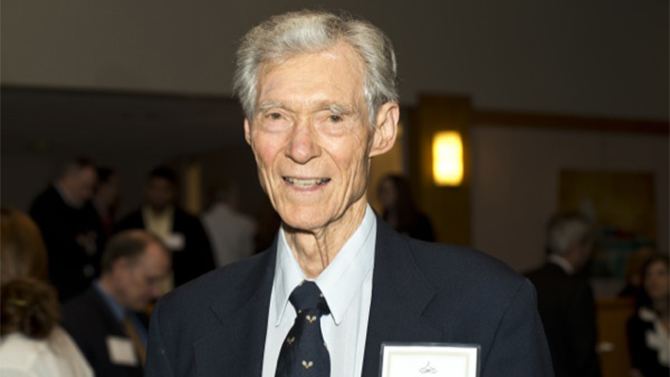Carroll Ellis Izard (October 8, 1923 – February 5, 2017) was an American research psychologist known for his contributions to differential emotions theory (DET), and the Maximally Discriminative Affect Coding System (MAX). Differential Emotions Theory maintains that universally recognizable innate, basic emotions emerge within the first 2 to 7 months of post-natal life "without facial movement precursors", and argues for congruence of emotional expression and subjective experience. Izard also undertook empirical studies into the facial feedback hypothesis according to which emotions which have different functions also cause facial expressions which in turn provide us with cues about what emotion a person is feeling. In addition, Izard constructed a multidimensional self-report measure – the Differential Emotions Scale – currently in its 4th edition (DES-IV) that purports to measure 12 fundamental emotions universally discernible in the facial expressions of infants – labeled: Interest, Joy, Surprise, Sadness, Anger, Disgust, Contempt, Self-Hostility, Fear, Shame, Shyness, and Guilt.
Izard earned his PhD from Syracuse University in 1952 and served initially as a psychology professor at Vanderbilt University, where he carried out pioneering research into human emotions. In 1976, he joined the Department of Psychology at the University of Delaware where he remained active as Unidel Professor of Psychology in the McKinly Laboratory until his retirement in 2014. A festschrift was held at the University of Delaware on 22 October 2012 to celebrate Izard's lifelong contributions to the understanding of human emotional development. The festschrift was attended by his former students and colleagues from all over the world (with one of his former doctoral advisees Gregory John Boyle travelling from as far away as Australia). His long-time eminent colleague Marvin Zuckerman from the Department of Psychology, University of Delaware also was in attendance. The keynote address was delivered by Dante Cicchetti from the University of Minnesota.
Face of Emotion. (1993). Irvington Publishers.The Psychology of Emotions. (1991). New York: Plenum.Human Emotions. (1977). New York: Plenum.Patterns of Emotions: A New Analysis of Anxiety and Depression. (1972). New York: Academic.The Face of Emotion. (1971). New York: Appleton-Century-Crofts.Depression in Young People: Developmental and Clinical Perspectives. (1985). Guilford. (with Michael Rutter)Emotions, Cognition and Behaviour. (1984). Cambridge University Press. (with Jerome Kagan)Measuring Emotions in Infants and Children: Vol. 1. (1982). Cambridge University Press.Differential emotions theory. (2009). In D. Sander and K. Scherer (Eds.), The Oxford Companion to Emotion and the Affective Sciences (pp. 117–119). New York: Oxford University Press. (with K.A. King)Emotions and developmental psychopathology. (2006). In D. Cicchetti & D.J. Cohen (Eds.), Developmental Psychology: Theory and Method (2nd ed.). (Vol. 1, pp. 244–292). New York: Wiley. (Izard, C.E. et al.)Motivational, organizational, and regulatory functions of discrete emotions. (2000). In M. Lewis & J. Haviland-Jones (Eds.), Handbook of Emotions (2nd ed.) (pp. 253–322). New York: Guilford. (with B.P. Ackerman)Self organization of discrete emotions, emotion patterns, and emotion cognition relations. (2000). In M.D. Lewis & I. Granic (Eds.), Emotion, Development, and Self-organization (pp. 15–36). Cambridge University Press. (Izard, C.E. et al.)Emotions and self-concepts across the life span. (1997). In K.W. Schaie & M.P. Lawton (Eds.), Annual Review of Gerontology and Geriatrics, 17, 1–26. New York: Springer. (with B.P. Ackerman)Selected articles
Emotion theory and research: Highlights, unanswered questions, and emerging issues. Annual Review of Psychology, 2009, 60, 1-25.Basic emotions, natural kinds, emotion schemas, and a new paradigm. Perspectives on Psychological Science, 2007, 2(3), 260-280.Levels of emotion and levels of consciousness. Behavioral and Brain Sciences, 2007, 30, 96–98.Many ways to awareness: A developmental perspective on cognitive access. Behavioral and Brain Sciences, 2007, 30, 506-507.Translating emotion theory and research into preventative interventions. Psychological Bulletin, 2002, 128(5): 796–824.Emotional intelligence or adaptive emotions?. Emotion, 2001, 1(3), 249–257.Emotion knowledge as a predictor of social behavior and academic competence in children at risk. Psychological Science, 2001, 12, 18–23.Innate and universal facial expressions: Evidence from developmental and cross-cultural research. Psychological Bulletin, 1994, 115, 288–299.Four systems for emotion activation: Cognitive and noncognitive processes. Psychological Review, 1993, 100, 68–90.Stability of emotion experiences and their relations to traits of personality. Journal of Personality and Social Psychology, 1993, 64, 847-860.Basic emotions, relations among emotions, and emotion-cognition relations. Psychological Review, 1992, 99, 561–565.Facial expressions and the regulation of emotions. Journal of Personality and Social Psychology, 1990, 58, 487–498.Infants’ emotion expressions to acute pain: Developmental change and stability of individual differences. Developmental Psychology, 1987, 23, 105–113.

